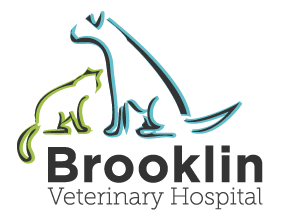Library
-
This handout discusses muscular dystrophy (MD), primarily in dogs. The cause of the disease is a defect in the proteins found in muscle cells. It is often an inherited disease, usually affecting young dogs. Clinical signs (usually starting as muscle weakness) and diagnosis of the condition are outlined. There is no effective treatment for the condition.
-
Mynah birds are best known for their ability to talk and mimic sounds. They are lively, social birds and have wonderfully outgoing personalities. A young, hand-raised mynah will be easier to tame and train compared to a wild, colony, or parent-raised bird. As with all pets, mynah birds require regular, routine veterinary checkups.
-
When a farrier shoes a horse, accurate placement of each nail through the insensitive epidermal laminae of the hoof is essential. The nail must penetrate deep enough to hold firm, but not deep enough to penetrate the sensitive laminae of the hoof.
-
Polyps are benign fleshy growths that originate from the cells lining a cat's nasal passages, leading to a variety of clinical signs such as sneezing, difficulty breathing, and recurrent ear infections. The various diagnostic tools and treatment approaches are explained in this handout.
-
Nasal tumors are an uncommon type of cancer but when they do occur, they tend to be malignant and locally aggressive. Staging can be done to determine the type of cancer and if it has affected anywhere else in the body. Treatment can be done in some cases to help relieve clinical signs, most often with radiation therapy.
-
Nasopharyngeal polyps are benign idiopathic masses originating from the middle ear that extend either down the eustachian tube or into the external ear. They can cause stertor, nasal discharge, otitis, otic discharge and head tilt. Diagnosis may involve visualization through otoscopic exam or behind the soft palate, but usually needs radiographic evidence or more advanced imaging such as CT or MRI. Treatment involves debulking the mass through traction which has a high rate of recurrence, or more advanced surgery into the bulla to remove the source of the polyp.
-
Navicular 'disease' is really a group of related conditions affecting the navicular bone and associated structures in the foot. There are several possible causes of pain in and around the navicular bone.
-
Neuroendocrine tumors are a group of tumors that develop from the cells of the neuroendocrine system, and include insulinomas, gastrinomas, glucagonomas, carcinoids, medullary thyroid carcinomas, small-cell lung carcinomas, pheochromocytomas, chemodectomas, and Merkel cell carcinomas. This article discusses signs, diagnosis, treatment, and prognosis.
-
A chemodectoma is a type of tumor made up of chemoreceptor cells. Chemoreceptor cells detect chemical changes in the body and respond by regulating chemical or physical processes. These tumors are most often seen along one of the carotid arteries and the aorta. Brachycephalic breeds are more predisposed to these types of tumors, though they may occur in any dog breed. These tumors are usually locally aggressive, however, there are rare cases of metastasis to other organs, including the lungs, lymph nodes, and bone.
-
Neutering is also referred to as orchidectomy or castration. It is a surgical procedure in which the testicles are removed to sterilize or render a male animal infertile. There are many behavioral and health benefits associated with neutering your rat. Most rats are neutered between four and six months of age.



